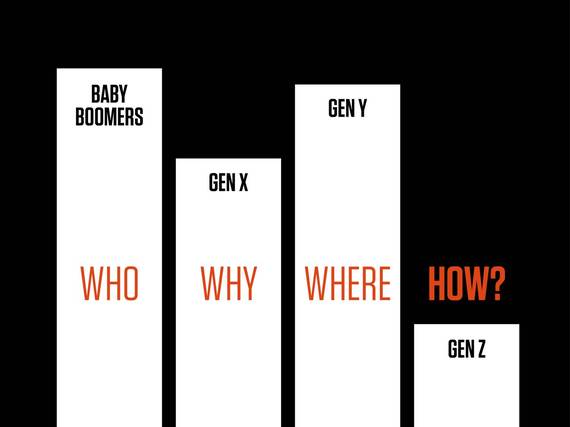
There has been quite a bit of discussion lately on "The Office of the Future" -- what it will look like, how will it be different than the traditional office, will there still be an appetite for cubicles? These, of course, are all great questions if you work in an office or have in the past.
As an architect with a passion for the transformation of office buildings, I have seen this firsthand and have worked on repositioning many buildings and workplaces for building owners and companies who want to remain competitive in today's marketplace. In my opinion, the workplace of the future will have nothing to do with who you are or where you work; rather it will have everything to do with HOW you work, meaning our personal and emotional attachment to things like our offices, desks and cubicles will be a thing of the past. Offices will have to cater to the work styles of a variety of generations at the same time -- and these styles vary greatly.
The evolution of the workplace is best understood from a generational lens as each age group experienced a shift in behavior, beliefs and attitude which ultimately shaped their office environment.
•Baby Boomers: In the period immediately following World War II, the workplace was dominated by a mostly male workforce. With an incredibly strong work ethic, the typical baby boomer, or the "who" generation, held a long-term mindset, working often at the same company or two throughout their careers largely focused on getting that pension. They usually had their own work space, isolated from other colleagues where even inter-office communication came through memos delivered by secretaries. These office spaces were a reflection of "who" you were, meaning your status in the office hierarchy, with the mahogany corner office being the ultimate goal.
•Generation X: As Baby Boomers took their time to grow up in a post-war rebuilding world, the Gen Xers were pushed toward adulthood at an age earlier than any other recent generation, spending less time with their parents (who were working) and often home alone and taking care of themselves and their siblings. Just as Gen Xers were about to hit the workforce, the economic decline at the end of the 1980s occurred. Suddenly, the future looked bleak as there were fewer jobs available and competition for work was tight. They are dubbed the "why" generation -- why am I working? They didn't see much of a light at the end of the tunnel. As a result, the workplace didn't change much from the Boomers before them.
•Generation Y: Today, it's all about accommodating the Millennials, or the "where" generation. This group of workers embrace technology, are entrepreneurial and expect to be successful. To them, fulfillment and job experience is more important than the job itself. More importantly, they can work from anywhere with their laptops, tablets, phones, etc. They work in cafes, at home, at restaurants, outside. Therefore, landlords want to create an office environment in their buildings that have all of these features -- open spaces to collaborate, coffee shops, lobbies that have couches and a homey feel, recreational areas. The office has become a destination to live, work and play -- not just a place to work.
· Generation Z: In this cohort where currently the oldest member is just 18 years old, the shift in attitude will be HOW we work -- the "how" generation. We've entered the sharing economy where the idea of pooling resources and collaboration permeates our society from top to bottom. Companies like Uber and Airbnb market to this very well. This generation is much more community -based. It's all about developing a strong network, co-working, crowdsourcing -- not hierarchy. It's about building a cross-pollination of ideas and relationships and creating more collaborative environments. There is no more silo-ing of employees. People have more respect for different workstyles. The future is how YOU work.
So why does all of this really matter? It matters because our buildings and workplaces will have to adapt and evolve to meet the changing times. Companies want to attract the future's best and brightest talent. Office buildings have to keep up to attract and retain these tenants. The generational shift is already upon us, and we have to embrace it.
